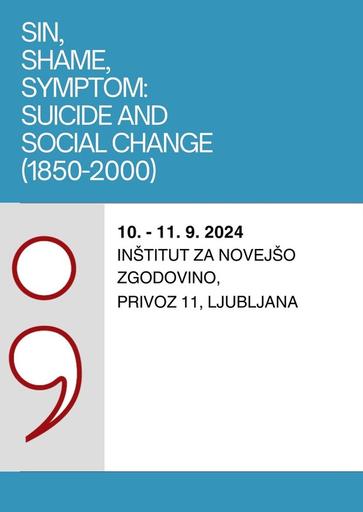/
Dogodki
/
Konference
History of suicide prevention


To delo avtorja Diego De Leo je ponujeno pod Creative Commons Priznanje avtorstva-Nekomercialno-Deljenje pod enakimi pogoji 4.0 Mednarodna
Datoteke (1)
Opis
Suicide prevention has a complex history that reflects the evolution of our understanding and attitudes towards mental health. Views of suicide have varied greatly. In ancient Greece and Rome times, for example, suicide was sometimes accepted, as was the case with the Stoic philosophers. However, in many cultures, it was seen as an act of desperation or a religious taboo. With the spread of Christianity, suicide was condemned as a sin. The Church considered it an act against God and the community, leading to severe religious and social sanctions. The burial of suicides in consecrated ground was forbidden; they were often buried at crossroads (with a stake driven into the body) or at the edge of the city, or a deserted and remote place. If accepted in cemeteries, they were placed in a corner near the wall or under the gutter. The suicide's grave was not to be cared for. During the Renaissance the dominant religious view of suicide continued to influence society, but some intellectual challenges to these ideas began to emerge. Robert Burton, with his Anatomy of Melancholy (1621), invited his contemporaries – in contrast to the dominant mentality – to mitigate the harsh judgment of condemnation towards suicide, especially in those cases in which people had shown to possess a profoundly melancholic character. The coining of the term suicide, which replaces the expression ‘self-murder’, comes shortly after Burton's work, and represents an important sign of change. The proposal came from Sir Thomas Browne, a physician and prelate, in his Religio Medici (1642): suicidium was referred to the Latin sui (of oneself) and caedere (to kill). The medical approach to the phenomenon of suicide was to end up acquiring a decisive importance in the criminal cases brought against suicides. In a historical context in which suicide was considered a crime (felo de se) against the state, the presence of a pathological condition (non compos mentis) represented, in fact, the only mitigating factor capable of protecting the suicide victim (and his family) from the legal and administrative consequences of the act (confiscation of his assets).
Metapodatki (12)
- identifikatorhttps://hdl.handle.net/11686/71069
- naslov
- History of suicide prevention
- avtor
- Diego De Leo
- soavtor
- Dragica Čeč (mod.)
- predmet
- samomori
- preventiva
- duševno zdravje
- opis
- Suicide prevention has a complex history that reflects the evolution of our understanding and attitudes towards mental health. Views of suicide have varied greatly. In ancient Greece and Rome times, for example, suicide was sometimes accepted, as was the case with the Stoic philosophers. However, in many cultures, it was seen as an act of desperation or a religious taboo. With the spread of Christianity, suicide was condemned as a sin. The Church considered it an act against God and the community, leading to severe religious and social sanctions. The burial of suicides in consecrated ground was forbidden; they were often buried at crossroads (with a stake driven into the body) or at the edge of the city, or a deserted and remote place. If accepted in cemeteries, they were placed in a corner near the wall or under the gutter. The suicide's grave was not to be cared for. During the Renaissance the dominant religious view of suicide continued to influence society, but some intellectual challenges to these ideas began to emerge. Robert Burton, with his Anatomy of Melancholy (1621), invited his contemporaries – in contrast to the dominant mentality – to mitigate the harsh judgment of condemnation towards suicide, especially in those cases in which people had shown to possess a profoundly melancholic character. The coining of the term suicide, which replaces the expression ‘self-murder’, comes shortly after Burton's work, and represents an important sign of change. The proposal came from Sir Thomas Browne, a physician and prelate, in his Religio Medici (1642): suicidium was referred to the Latin sui (of oneself) and caedere (to kill). The medical approach to the phenomenon of suicide was to end up acquiring a decisive importance in the criminal cases brought against suicides. In a historical context in which suicide was considered a crime (felo de se) against the state, the presence of a pathological condition (non compos mentis) represented, in fact, the only mitigating factor capable of protecting the suicide victim (and his family) from the legal and administrative consequences of the act (confiscation of his assets).
- založnik
- Inštitut za novejšo zgodovino
- datum
- 11. 09. 2024
- tip
- video
- jezik
- Angleščina
- jeDelOd
- pravice
- licenca: ccByNcSa
